Updated on 2023-08-09
21 views
5min read
“Hi, I accidentally deleted some important files from my Windows XP hard drive permanently. Do you have any idea how I can recover it?”
If you're in a similar situation as the user above, you're not alone. Permanently deleting your important data can be quite annoying. But the best thing to do in such a situation is to find a solution.
So, if you've lost your files due to accidental deletion or hard drive format, don't panic. There are several approaches that can come in handy in such a situation.
In today's post, we've explored the different methods that you can use to recover permanently deleted data from Windows XP hard drive efficiently without requiring technical knowledge. knowledge. Just read on to find out more.
Part 1: Best Data Recovery for Windows XP Hard Drive
If you're looking for the best data recovery for Windows XP hard drive, no software comes close to Eassiy Data Recovery. This fully functional data recovery software offers comprehensive features that allows you to execute data recovery with high quality.
Besides, the software can come in handy in different scenarios, including accidentally deleted data, system crash, partition loss, etc. And it's not limited to recovering data from only hard drive data but over 2,000 types of storage devices.
Overall, Eassiy Data Recovery is very powerful, and with the availability of its quick scan and deep scan scanning mode, recovering severely damaged data with a high-success rate will be just like a walk in the park.
Key features:
- Supports the best deep scan mode with high success of up to 98.6%.
- Recover over 1000 types of files from 2,000+ types of storage devices within a few clicks.
- Facilitate recovery of data lost due to any kind of scenario, like accidental delete, formatting, partition loss, etc.
- Boasts a flexible recovery process, allowing you to pause and resume the scanning process without compromising the operation.
- Easily filter, preview, and choose the type of files you wish to recover.
Part 2: How to Permanently Recover Deleted Data from Windows XP Hard Drive
It's easy to permanently recovery deleted data from Windows XP Drive once you have Eassiy Data Recovery at your fingertips. Yes, this is because the tool is very fast and straightforward to use. Let's dive right into the steps to use Eassiy Data Recovery below;
Step 1: Download and install the Eassiy Data Recovery software on your Mac or PC.
Step 2: Launch the tool and connect your hard drive to the computer using the relevant method.
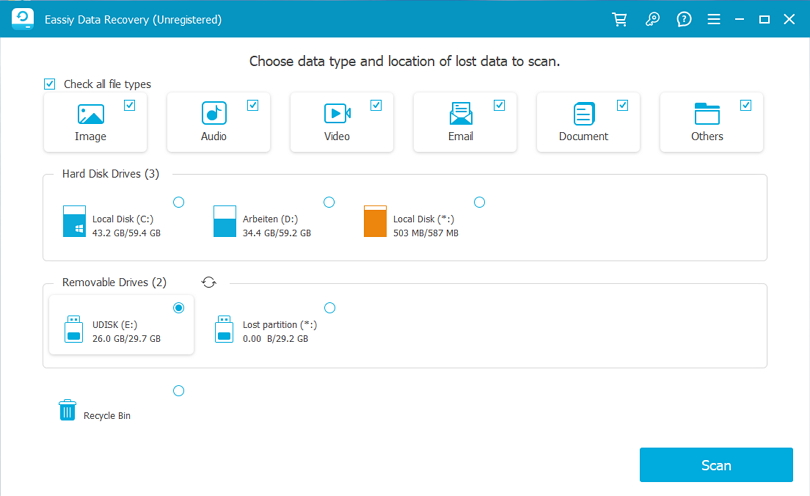
Step 3: The software will automatically detect the connected hard drive. Click Scan and wait for the tool to perform a quick scan to recover your lost data.
- But if don't like the output of the quick scan, select the Deep Scan mode to perform a more in-depth scan.
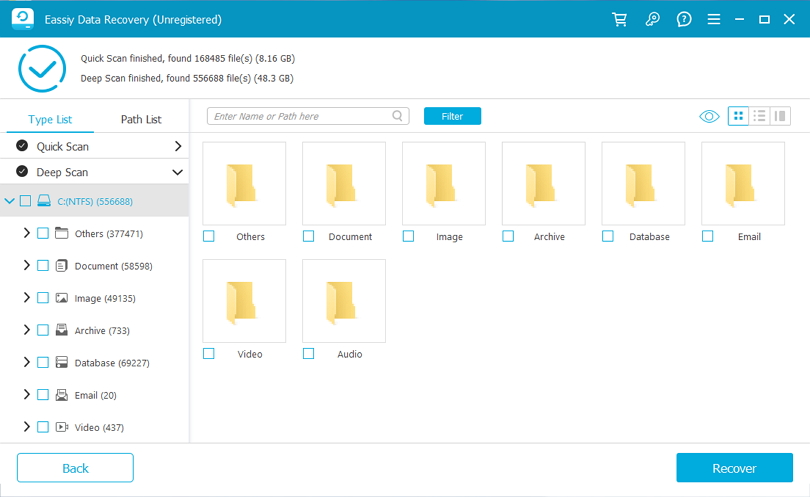
Step 4: After the scanning process is complete, preview the recovered files. Then, use the Recover button to save the lost data to your local storage.
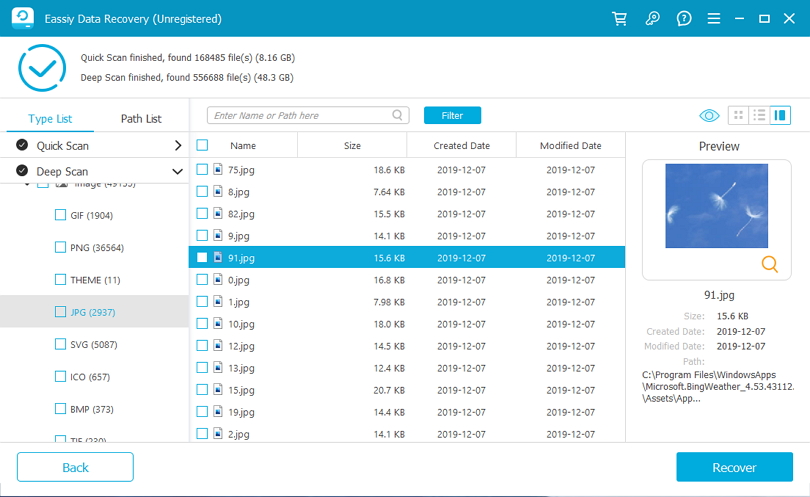
Image Name: permanently-recover-lost-data-from-windows-xp-hard-drive-3.jpg
Part 3: Other Helpful Methods To Recover Deleted Data From Windows XP Hard Drive Free
There are other methods that can come in handy to recover deleted data from desktop XP hard drives. However, keep in mind that these techniques are not assured to help you recover permanently deleted data from Windows XP. Check them out below;
Method 1: Restore Data From Backup
If you've created a backup of your Windows XP hard drive data before the data loss scenario occurred, the good news is you can restore your data from the backup. Follow the following steps to operate;
Step 1: Go to Start Menu and type Accessories. Then, select System Tools > Backup.
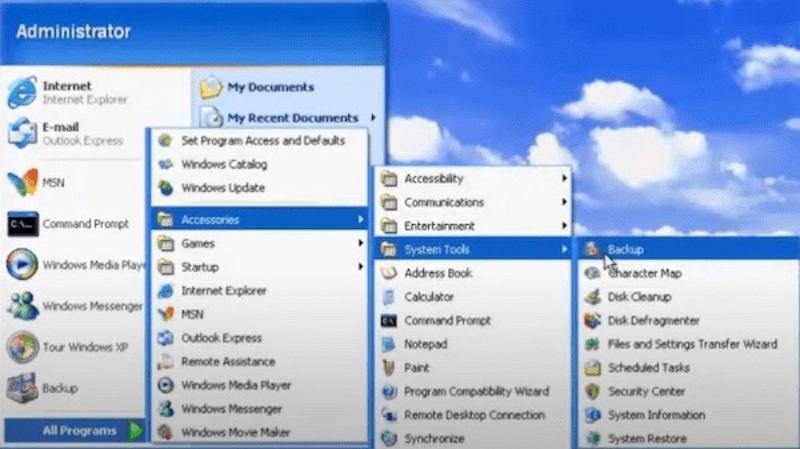
Step 2: The Backup or Restore wizard should appear on your screen. Click Next to proceed.
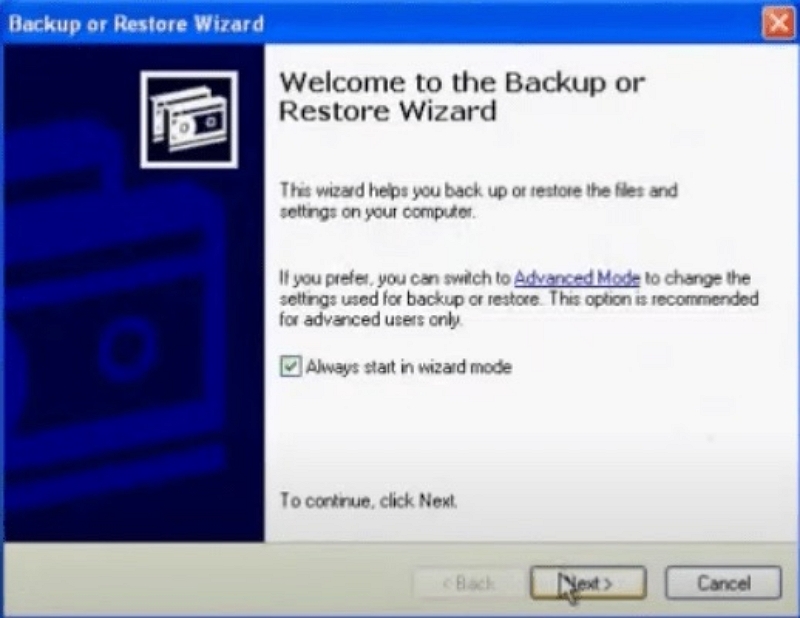
Step 3: Select Restore files and Settings and click Next.
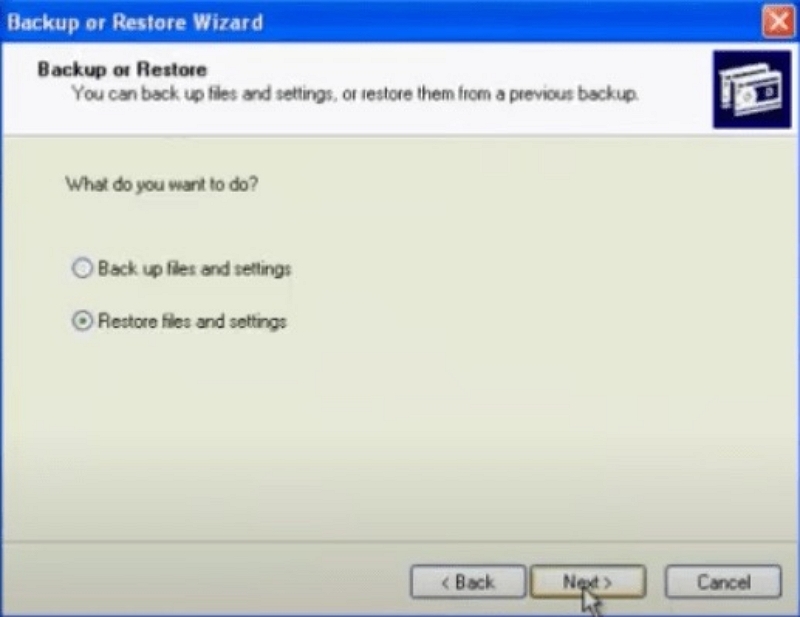
Step 4: Select your backup folder and click Next.
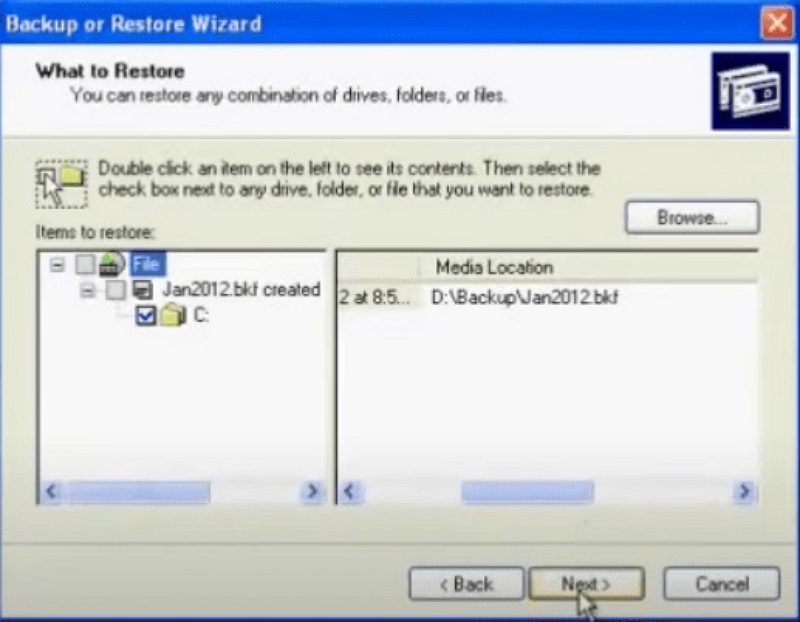
Step 5: Finally, click Finish to start recovering your data.
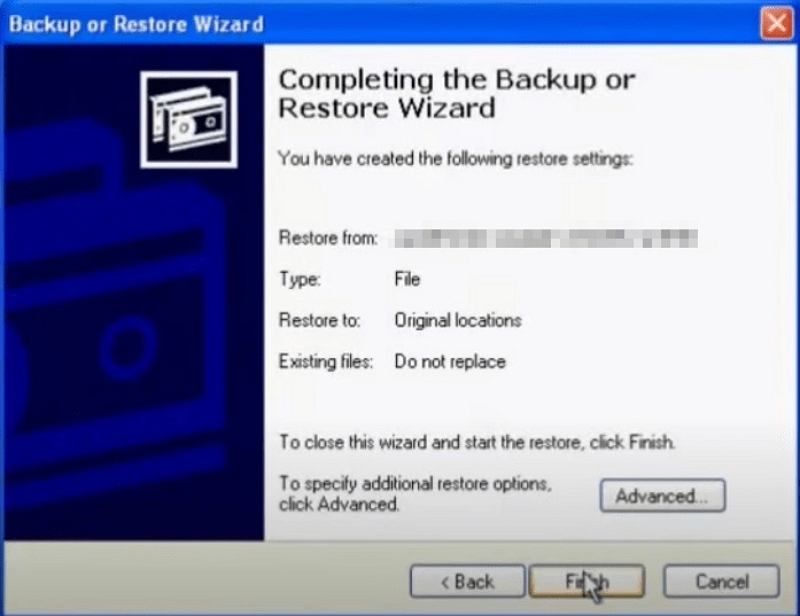
Disadvantage of this method
- Slow restoration process (It could take take hours to complete)
Method 2: Use System Restore
System Restore is another built-in feature in Windows XP that can be used to restore deleted data. However, you must ensure you've enabled the feature on your computer to be able to use it to recover lost data.
See how to use System Restore to recover Windows XP hard drive data below;
Step 1: Click Start and search Accessories. Then, select System Tools > System Restore.
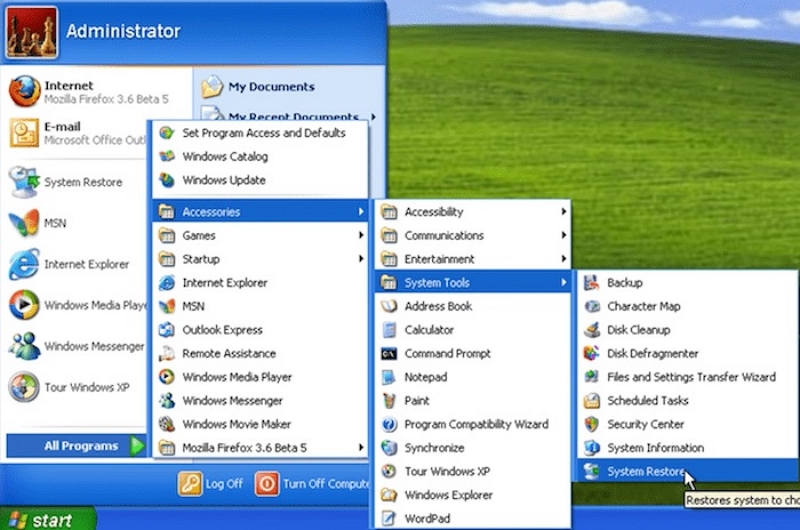
Step 2: Select ‘Restore my computer to an earlier time’ and click Next to proceed.
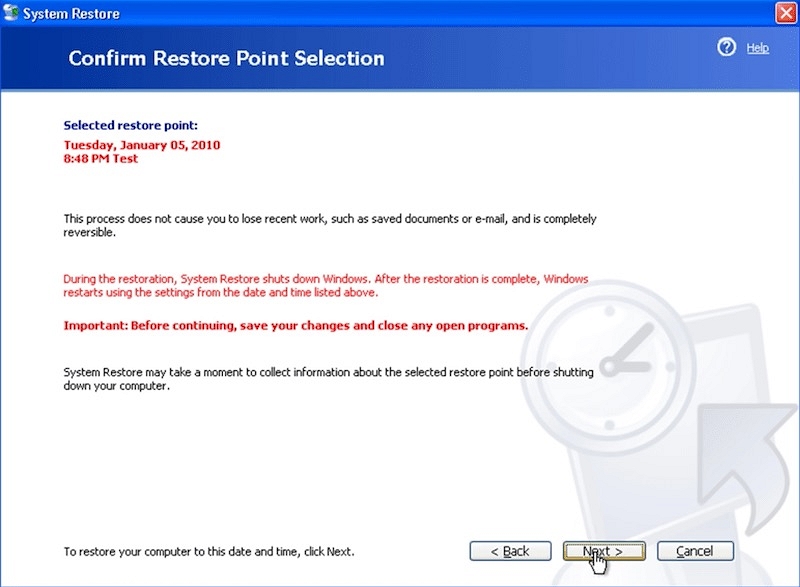
Step 3: Select the date when your files were last available on the Windows XP hard drive from the left. Then, select a restore point and click Next.
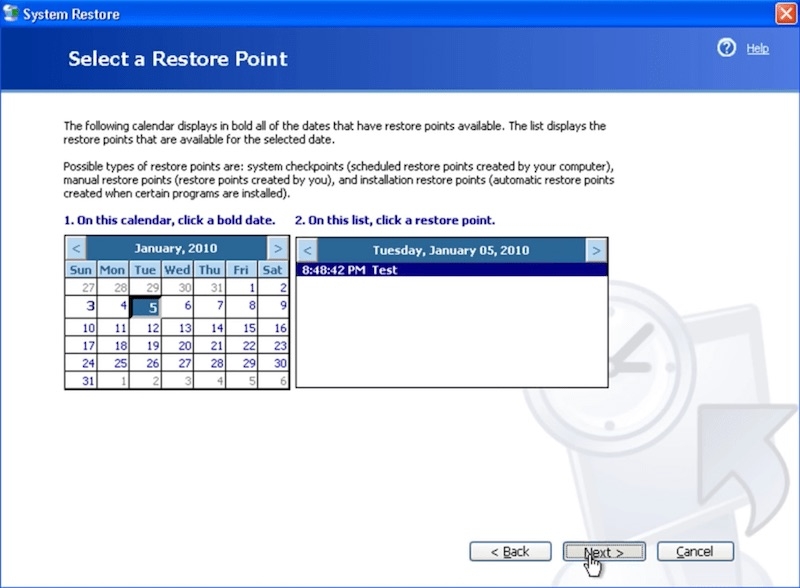
Step 4: Click Next again to confirm the restore point selection and wait for the system restoration process to begin.
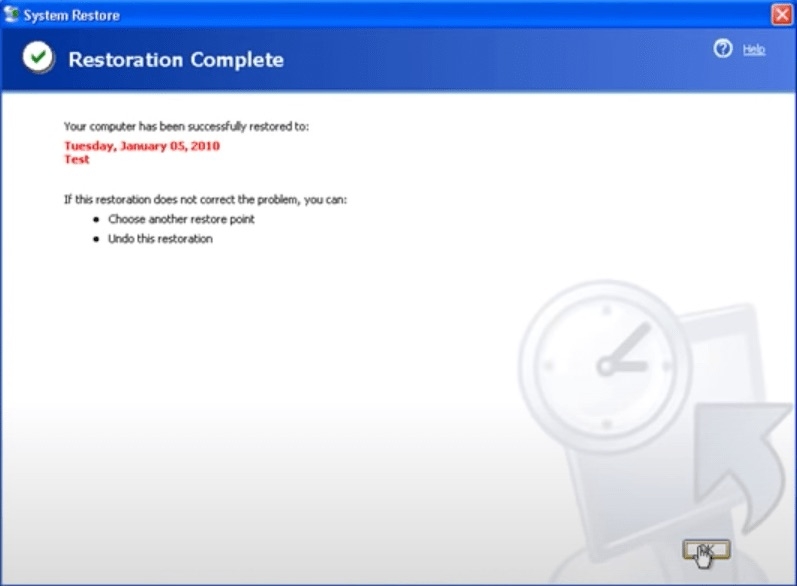
Step 5: Afterward, click OK to finish.
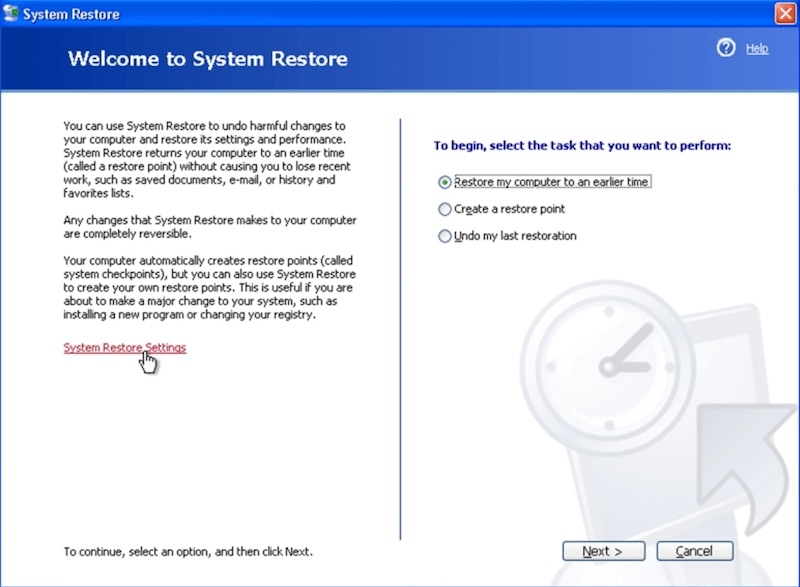
Disadvantage if this method
- It's not effective if you haven't enabled the system restore feature before the data loss.
Method 3: Recover Data With CMD
CMD, also known as the command prompt, can help you execute local hard drive recovery, which is helpful to recover lost data. Make sure to follow the instructions below to be able to restore data with CMD on Windows XP effectively.
Step 1: Go to Start Menu and type Command Prompt. Then, click Run As
Step 2: You need to run CMD as an administrator. So, enter your username and password in the relevant area, as shown in the image below. Then, click OK.
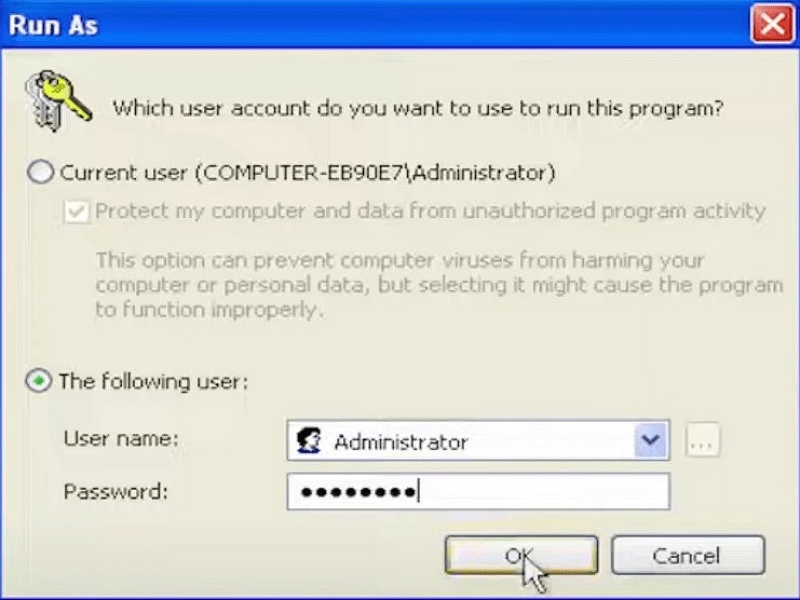
Step 3: Type the command: chkdsk C: /f and click Enter. Keep in mind that C should be replaced with the drive letter of the hard drive on your own Windows XP computer.
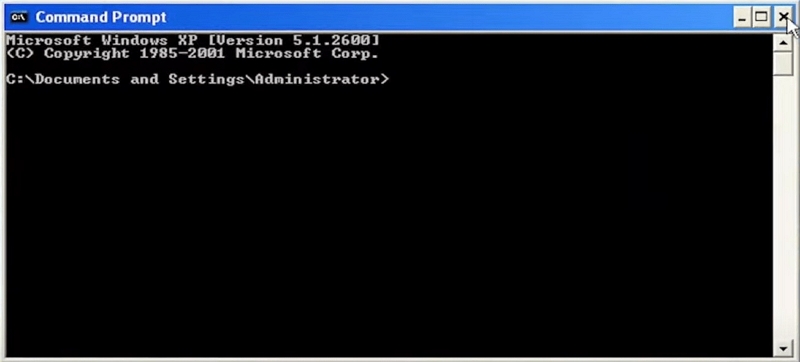
Step 4: Finally, type attrib -h -r -s /s /d C:*.* and click Enter. Then, restart your computer.
Disadvantage of this method
- It's slow.
- Low recovery success rate.
Conclusion
Recovering permanently deleted data from a Windows XP hard drive requires quick action, the use of reliable data recovery software like Recuva or TestDisk, and the option of seeking professional data recovery services if needed. Creating disk images and maintaining regular backups are essential preventive measures. With the right approach, it is possible to retrieve valuable information and minimize the risk of data loss in the future.






